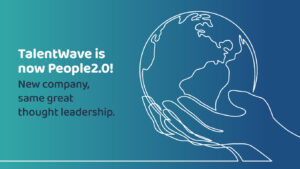Organizations of all sizes and across all industries are increasingly choosing to engage contingent labor. This segment of the workforce is expected to reach 40% (or more) of the total US workforce within the next decade, and is being driven by monumental supply and demand forces in the talent marketplace. As this segment of the total workforce grows, and technology continues to remove friction from finding and engaging them, corporate Human Resources professionals have a vital role to play. With this in mind, let’s examine a few ways HR can remain relevant in this new world of work.
Independent Workforce Benefits
Leveraging the independent workforce offers the enterprise many advantages. Over the years, many Human Resources professionals have learned to enjoy benefits such as:
- Flexibility to quickly scale up and down without the burden of hiring and firing employees
- Cost savings versus traditional employees
As more of the workforce is choosing to work independently, and finding it to be a stable and desirable career path, many HR professionals are also realizing that a flexible workforce strategy also provides access to scarce talent.
Most enterprise HR or Talent Acquisition professionals recognize that their current worker population includes a mix of full-time, part-time and independent workers of all stripes (freelancers, independent contractors, consultants, temps, etc.) In fact, there are currently an estimated 53 million independent US workers, which represents approximately 34 percent of the total workforce. By 2020 that number is widely expected to approach 50 percent.
Think about that last data point for a second: Within the next 10 years, potentially one out of every two workers will not be an employee of your company, but rather a free agent, with the freedom to choose when and where to work, and for whom.
That statement is staggering, and worth putting up on a large poster in the company boardroom.
Is the Independent Workforce a Threat to HR?
Human Resources have always served traditional employees (both full-time and part-time). The rapid and significant growth of the independent workforce has dramatically expanded the scope.
Some HR professionals might view the growth of the independent workforce as only a threat and significant legal vulnerability, whereas others will see the opportunity and embrace it. There are always three options to take when confronted by seismic market forces like this:
- Bury your head in the sand and hope it will go away. Not likely. The independent workforce is here to stay.
- Fight it in hopes of keeping the status quo for as long as possible. Not advised. It is a losing battle to fight the macro demographic, psychographic, and firmographic forces that are changing the world of work.
- Embrace it and figure out how to harness its power for your organization. Ride the wave! Forward-thinking HR leaders will recognize this is the right approach, embrace it, and get out in front of it. I doing this, HR will remain relevant, and lead their company into the future.
Considerations for Progressive HR Leaders
As the workforce become more independent and work becomes more on-demand in nature, here are some ideas for HR leaders to consider:
- Shift focus to being a client-of-choice: Human Resources has traditionally focused on hiring and managing employees, and on creating an employer-of-choice brand for the organization. In the new world of work, where up to half the workforce may not be your employee, you should consider how to make your organization a client-of-choice for independent workers. This expanded viewpoint will help to attract and retain the vital talent you need, regardless of their worker classification.
- Adopt a total-talent mindset: There are many ways to find talent in today’s market. In addition to traditional recruiting channels, there are staffing firms, consulting firms, direct-sourcing, and online talent marketplaces. Progressive HR leaders should consider taking a strategic view of the talent supply and demand equation for an organization in order to make sure the right talent is in the right place at the right time, regardless of source.
- Help managers build teams: The average employee tenure at a company has been decreasing for years. Human Resource Executive magazine reported that the average tenure at a company by Millennials is 2 years. (Compared to 5 years for Gen X and 7 for Baby Boomers!) With this backdrop, it is clear that we know less about workers and their abilities than in times past. Therefore, helping managers to build fluid teams of compatible and productive workers will become increasingly important. There is great value in helping managers find workers with the right skills, and an understanding of the personality traits, behaviors and strengths that the individual can bring to the team.
- Help managers to become “player coaches”: With an increasingly transient workforce, companies will need to revisit how they train and build up their talent. It is common to offer traditional employees training and development opportunities. However, the expectation for independent workers is that they already possess the skills they need to be effective, in fact there is risk in offering them training as that helps build a worker misclassification case against the company. Even though independent workers show up with specific skills and experience, they still need to understand a number of things about the company in order to be effective on their project. For example, they need to learn about the culture of the company, the products and services, the customers, the marketplace, the team they have just joined, and the project they have been engaged to work on. HR can help managers by providing the onboarding tools, processes, and training so that they can succeed in their role and be a coach to help their independent workers ramp up quickly.
- Curate proven independent talent: As independent workers roll off projects, HR and Talent Acquisition professionals have an opportunity to build a talent community of proven workers who can be re-engaged on future projects. HR should gather feedback from managers and contractors after projects are completed so that only workers who have successfully delivered results, and the organization wants to use again, are considered for new opportunities.Bottom of Form
- Benchmark and standardize rates: HR has always been heavily involved with setting and managing compensation programs for traditional employees of the organization. With the growth of the independent workforce, there is an opportunity for HR to provide the same level of insight and management for independent worker rates. Benchmarking and standardizing rates for contractors used across the company can provide useful guidance for managers as they are planning projects and selecting resources perform work.
Moving forward
HR leaders need to recognize that their role must evolve, just as the workplace is evolving. As the independent workforce continues to grow, Human Resources and Talent Acquisition professionals must take a broader, more holistic, view of talent. Effectively embracing the independent workforce is a key strategic imperative, and a significant challenge. TalentWave is uniquely qualified to help your organization safely and effectively engage the independent workforce.



